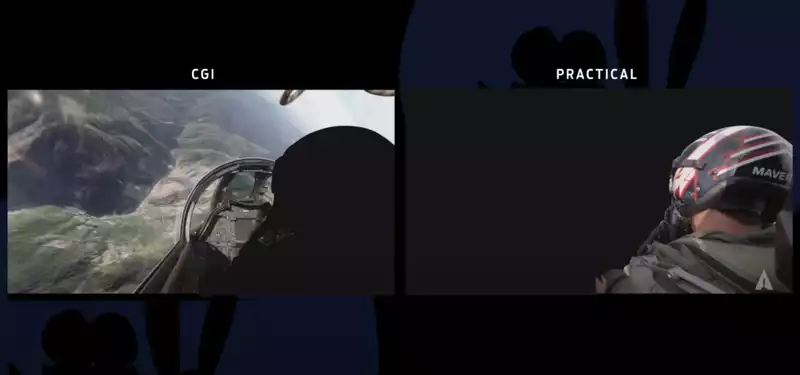Oct 30, 2023
Video Essay Why don't studios admit they use CG?
From the outside looking in, it may appear that Hollywood's big-budget films are undergoing a Practical Effects Renaissance. Films and series are sold by the quantity of practical shots, often with little or no appreciation for the hundreds of digital effects workers who create the images that appear on the screen.
This phenomenon was the main topic of a recent video posted by Jonas Ussing, a visual effects supervisor who has worked on such theatrical feature films as Netflix's "The Rain," "Cowboys & Aliens" and "Olympus Has Fallen." He also wrote and directed the short film "Zombiehagen."
In his latest video, he uses recent hit movies and series to discuss why much modern digital VFX work goes unnoticed and uncredited. He details what "invisible CG" is and why studios are not technically lying when they say "the shots were all shot practically."
Ussing begins with "Top Gun: Maverick" and presents clips and articles in which people involved in the film boast that every scene was shot practically. While this is true, and each scene was practically filmed, it is also disingenuous. Using points out that the film contains over 2,400 visual effects shots, and frequently, the practical footage was only used as a guide for the VFX artists to work from. For some shots, the only thing left in the final version was the human character.
Uzing shared footage of Eddie Hamilton, editor of Top Gun: Maverick, explaining that all of the film's final dogfights were shot on a substitute jet that was later replaced by the VFX artists. Hamilton says, "There are a lot of visual effects in this film, but you may not realize what they are because visual effects are invisible."
So if the scenes are almost entirely reskinned with digital effects, why bother shooting them in the first place, and why not create them from scratch on a computer? According to Using, it boils down to one word: "rooted in reality."
He says, "Shooting real aircraft from real aircraft not only provides great lighting references for the CG references we insert, but they also move like the real thing."
Ussing cites several examples of practical photography used to benefit VFX artists from "Blade Runner 2049," "Fast X," and "Stranger Things."
According to Ussing and other artists cited in the video, film and series effects are at their best when the practical effects team and the digital effects team work together toward the same goal.This argument is solid, but it leads to one big unanswered question posed by Using himself: "Why do studios cover up the use of CG as if it were mafia money? To explain this, he plans to post three more videos on the subject.




Post your comment